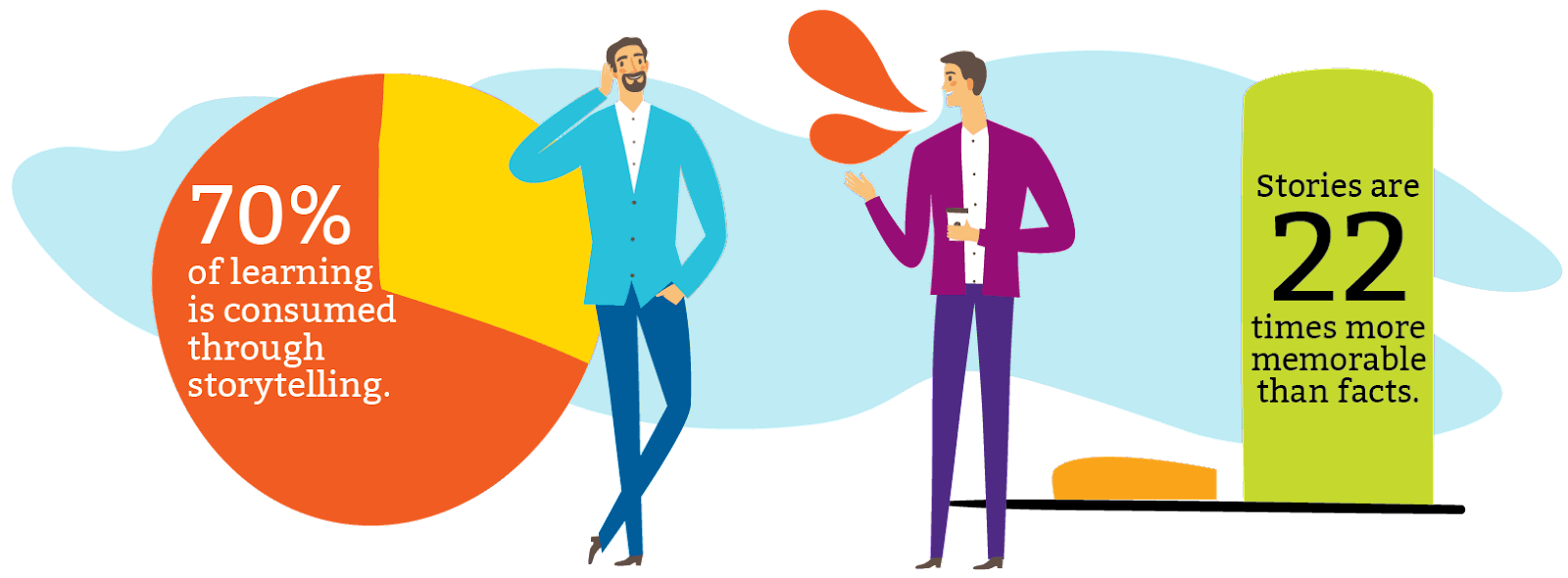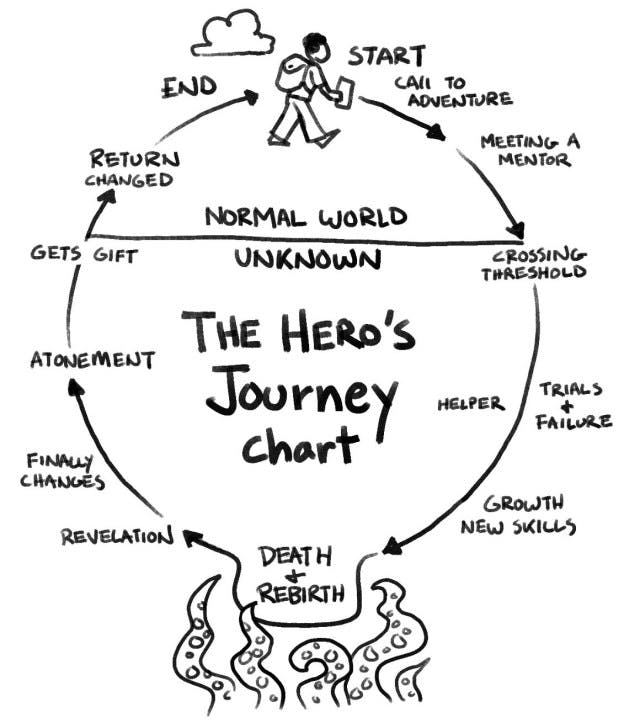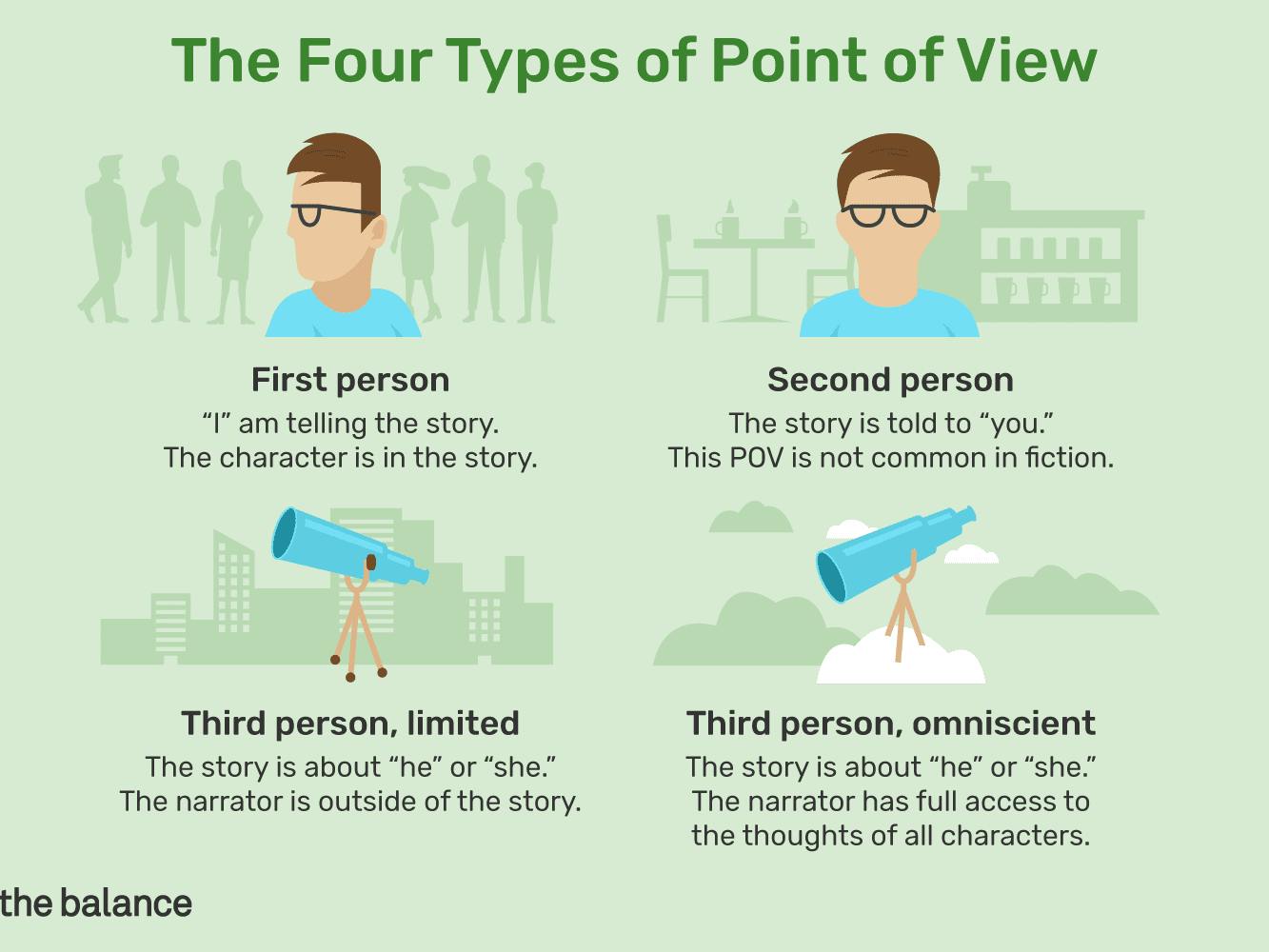Complete guide to storytelling
Jun 8th, 2022

Contents
What is storytelling?
Elements of storytelling
Storytelling techniques
Types and examples of storytelling
Every day the marketing environment becomes more and more crowded. Competition is growing as businesses create plenty of content to hold the audience’s attention. In addition, with the world becoming more digitized, marketing has become more accessible for companies. At the same time, it is more difficult for high-quality brands to distinguish themselves. Nowadays, making a good product is not enough; it is vital to find ways to differentiate it from competitors. Storytelling is exactly what you are looking for to stand out from the crowd.
A brand that uses storytelling when describing product features or demonstrating achievements portrays itself as more unique than one that presents boring statistical data or utilizes traditional advertising methods. Simple and entertaining stories about the company’s challenges and victories will be 22 times more memorable than just a list of facts. What’s more, storytelling appeals to customers’ emotions. The audience can forget the words, but they never forget how a brand made them feel while they engaged with it. Emotions are a greater impetus for purchase compared to logic. Thus using storytelling in your content marketing strategy will be a win-win solution.

What is storytelling?
Storytelling is a process of using a narrative to convey the message to the audience. The narrative stands for the primary storytelling components: setting, characters, conflict, rising action, climax, and resolution. Some stories are fact-based; others can be fictional to communicate the key points better. Storytelling aims to evoke readers’ feelings and motivate them to take action.
With storytelling, marketers can share a story that illustrates challenges to create an experience the audience can relate to. Businesses can describe the history of the brand and explain its mission, vision, and goals. Companies use narratives to engage customers in conversation and inspire. Marketers employ storytelling techniques to understand customers better, provide the sales team with the content and even improve a company’s culture.
Storytelling allows companies to demonstrate that their efforts are focused not only on making a profit but have a social impact. The understanding that a brand contributes substantially to the search for global solutions to cultural, economic, environmental, and other issues is an excellent motivation for customers to purchase more products from the company. Consumers experience a sense of connection to the company and turn into loyal clients as they empathize with its desire to transform people’s lives. A brand that communicates the mission through storytelling feels more human and, as a result, generates higher profits.
Elements of storytelling
A good story is like a puzzle. It always consists of many elements that fit together and make a big picture. Every company needs to consider these components when developing a narrative strategy. Below we will list the essential elements of a compelling marketing story and discuss them in detail.
Purpose
A purpose is a goal you are trying to reach with your narrative. The main question a marketing team should answer when establishing a purpose is: What objectives can your company achieve with this content? Then you need to check whether the piece of content corresponds to the requirements of the target audience. Once you define a purpose for telling a story, you will lay the foundation for the other vital elements.
Since the purpose is directly related to your company’s values, you can use a three-step framework to create captivating stories for your brand. The model is based on the following components: “self”, “us”, and “now”. Starting with “self” is the first step toward developing a successful brand narrative. For example, a company’s founder can tell his own story describing how particular experiences influenced his moral standards, which turned into the company’s values. The second component, called “us”, implies connecting the brand’s guiding principles to collective values shared by the target market. The last step is a call to action for everyone who wants to be involved in a brand’s mission.
Audience
One of the main rules for creating an effective marketing strategy can be applied to brand storytelling. Define your target audience, and you will reach the desired results. Start with one customer persona, and think about needs, personality traits, and demographic characteristics.
Analyze your existing audience and competitors’ audiences. Use social listening tools to monitor brand mentions and customer feedback. Examine the content that has a high conversion rate and initiates discussions among viewers and influencers. Finally, combine the received information with the statistical data, including age, location, and income. It helps you create several customer personas and construct narratives based on your target audience’s interests.
Story arc
The most amazing stories usually follow a precise pattern or story arc. It is the plot of the story from the beginning to the end. A storyline is called an “arc” because of the exposition, rising action, climax, declining action, and denouement. The exposition or the beginning of the narrative introduces characters, conflict, and setting, including time, place, and environment.

Then comes rising action or basic introduction, which begins with inciting incident. The audience observes a series of events that enhance conflict during the rising action. Characters try to solve the problem at this stage, but their attempts often fail. After that comes the climax or the point of greatest suspense and the most exciting moment of the narrative. Finally, the falling action, which occurs after the peak, decreases tension and leads to the story’s resolution.
Characters
The other key element of the compelling story is relatable characters. In some cases, the brand itself can serve as a character of the narrative. This technique is widely used in content marketing and advertising. For example, a brand can tell the history of its creation, describe the journey to success or explain what kind of impact the company wants to make. If your brand is less documentary-oriented, your content creators can act as narrators or personal voices of the company.
The other approach implies designing characters that your customers can project themselves onto. Thus, the protagonists of the story should reflect the demographics and background of your target audience. On the other hand, the characters can be the representatives of your brand who embody its ideals and culture. Therefore, characters’ traits, visual style, and speech should be consistent with brand identity, tone of voice, values, and vision.
Tension and conflict
Tension and conflict lie at the core of every fascinating story. A perfect tale describing how results meet objectives is boring and bland. In contrast, the struggle between expectation and reality evokes interest and admiration. In brand storytelling, conflict and tension stand for the problems the customers solve with the help of a product or service. Moreover, a brand can share its challenges and ways to overcome them. As a result, customers appreciate sincerity which encourages empathy and a stronger emotional connection with a company. In addition, you can include more than one conflict in a story. Try incorporating additional minor conflicts into various plot parts to reinforce an overarching conflict.
Medium
There is no point in using all existing marketing channels to share a story. A narrative should match the platform and meet the needs of the channel’s audience. Before creating a story, consider your customers’ expectations on Facebook, Instagram, Twitter, YouTube, and other platforms. As an illustration, Facebook users are interested in dialogue and conversation. Instagram subscribers can be described as enthusiastic and introverted spectators. Most of the YouTube audience watch videos to relax and to feel entertained. By considering these features, you can create the right plot, characters, and setting.
Storytelling techniques
Once we have reviewed the most critical elements of every story, let us move on to the techniques of constructing a powerful narrative.
Immerse the audience in the story
Instead of telling the story, show it. Use essential elements like plot, characters, setting, and conflict to provide vivid descriptions and dialogues that allow your audience to immerse themselves in the atmosphere of the place. Besides visual information, such as photographs, use sensory details like sounds that supplement your story and create an impression of involvement. This technique will engage the audience and turn a lecture into an exciting movie.
The other way to engage the audience is to apply a filmmaking technique called “breaking the fourth wall”. It happens when an actor interacts with the audience and invites viewers to participate in the performance. As part of digital branding, makers can achieve this by shooting behind-the-scenes videos, creating content, products, and services together with customers, utilizing user-generated content, and encouraging customer storytelling.
Develop a plot
A plot is a crucial element of every story as it helps organize every part of the story logically. When a story has a plot, readers can recognize similar patterns and focus on the most significant characters and events. There are several universal storylines that readers find appealing. These plots include the hero defeating a villain, the rags-to-riches story, a treasure hunt, and a character’s journey who returns as a different person. Finally, end the story with a positive takeaway, a short and memorable phrase that is either a piece of knowledge or advice on overcoming obstacles and making positive changes in society or people’s lives.

Create suspense
To increase the level of suspense in your story, you can apply three approaches. The first way is to present a story in chronological order and lead it to a dramatic ending. The other technique is to place the viewer in the sick of things and then go back in time and show how it all happened. According to the third approach, you can start by telling a predictable story and introduce a plot twist to surprise the audience. Create a STAR or “Something They’ll Always Remember” moment by providing a dramatic twist, shocking statistics, or provocative images. Add clues throughout the narrative to engage the readers even more.
Provide a personal touch
Nothing is more enthusing than a personal story, especially a narrative about overcoming tremendous challenges. Consider adding a personal touch to your story, whether its purpose is to sell a product or engage the audience. Your unique copywriting and personal experience described in a narrative will make it seem more truthful, lively, and authentic. You can present the story in the form of a testimonial and add some biographical details.
Change a point of view
If you feel that something is missing in your story, try telling it from the other point of view. The perspective determines who tells the story and what relationship the narrator has with the participants. The most common narration technique is the third point of view. The author describes the events that happen to the characters and uses the pronouns “he” and “she”. The third-person point of view is subdivided into an omniscient narrator who knows everything about the plot and the characters and a limited third-person narrator who knows only one character’s feelings and thoughts.

However, you can use first-person narrative and tell a story from the main character’s point of view using the “I” pronoun. The narrator can be a child or an animal, so this will give your story an exciting edge. On the other hand, the second-person narration implies using the pronoun “you” and creates the impression that the author speaks directly to the reader.
Let us consider how to apply these techniques in practice and look at some examples.
Types and examples of storytelling
We will describe the most common types of storytelling and analyze how brands use storytelling to attract potential customers and spark their interest.
Digital storytelling
Digital storytelling is the practice of using technology, such as computer-based tools, to tell stories. This storytelling type can take different forms like computer-based narratives or electronic memoirs. The core idea of digital storytelling lies in using digital means of communication, including audio, video production, graphics, and web publishing. Digital narratives usually contain images, text, voice recordings, videos, social media elements like tweets, and interactive elements like maps. The most widely used digital storytelling techniques in marketing include customer-generated stories on digital platforms, data-focused campaigns, and short product teasers.
Toyota provides a great example of digital storytelling in Big Game Commercial with the participation of Paralympic gold medalist Jessica Long. The audience is watching a moving story of Jessica’s life when her American parents adopted her at the age of 13 months. As a consequence of the illness, Jessica’s legs were amputated, but her foster mother was not afraid of possible difficulties. The dramatic effect of the story is reinforced by the sound of a voice on the phone and the setting, which depicts both Jessica’s mother’s apartment and a swimming pool where competitions take place. Toyota used this commercial not to promote vehicles but to demonstrate that every person has an inner strength.
Visual storytelling
Visual storytelling involves the use of visual media, including video, photography, animations, illustrations, and infographics. It usually includes five core elements: tension, entertainment, education, micro-interaction, and call to action. Tension encourages the audience to keep consuming the story. The fun element should capture people’s attention from the first seconds. Furthermore, a story should educate a viewer to help them better understand the subject. It is vital to ensure that even small and insignificant details like the movement of the objects create a positive impression. Finally, the call to action motivates the audience to take the next step after watching the story.

Population Healthier is a microsite sponsored by Athenahealth. The website presents the story of Lowell, Massachusetts, a city that found a way to make the population healthier and reduce expenses at the same time. The story is told with the help of text and visual elements, such as 3D renderings, maps, illustrations, graphs, and photos. In addition, the website engages visitors as pages react to users’ movements and encourage viewers to watch the story till the end.
Brand storytelling
Brand storytelling uses a narrative to communicate with an audience, raise brand awareness and develop its identity. Brand storytelling techniques depend on the industry, purpose, target audience, and media. The stories should reflect a brand’s mission and values and motivate consumers to interact with a company and feel that they are a part of the community. For example, brand storytelling can use a founder’s biography, describe the development of the product, share the story of the company’s employees or provide interviews with customers.
The Lego Story is a perfect example of brand storytelling released in the form of a video. A 17-minute animation was dedicated to the company’s 80th anniversary and described LEGO's origins and history. The story is narrated by Kjeld Kirk Kristiansen, the third president of The LEGO Group and the grandson of Lego inventor Ole Kirk Christiansen. The viewers can observe the impressive journey a company has made since its foundation, the difficulties and successes, and the central idea, which is today the company’s motto: “Only the best is good enough”.
Data storytelling
Data storytelling is the ability to deliver critical information using a combination of data, narrative and visual representation, such as diagrams, graphs, charts, pictures, and videos. Marketers can use this approach either to express the need for product improvements or provide valid reasons for purchasing the product to potential customers. This storytelling type uses the same main elements as any story, such as characters, setting, conflict, and resolution.
National Geographic visualized 500,000 deaths from Covid-19 in the United States using data storytelling. The magazine used illustrations, text, and statistical data to create a comprehensive report about the disease victims. National Geographic compared data to familiar subjects to make it easier for perception.
Video storytelling
Video storytelling is a strategy of using a video format to tell a narrative about a brand, product, or company. This storytelling type has many advantages over other approaches as it is naturally engaging and fits any type of media, including paid, owned, earned, and shared marketing channels. When creating a captivating video, remember the rule about 4 Es. A story should be engaging, emotional, educational, and empathetic.
Momondo, a travel meta-search system for flight deals, launched a marketing campaign called The DNA Journey. The company created a video where participants from different backgrounds described their cultural identities. Then Momondo provided them with the research findings of DNA analysis. The results were unexpected and overwhelming.
The video was successful because it evoked the feeling of involvement. As it portrays the emotions of study participants, the viewers empathize with them and think about their ancestors and cultural identities. Thus, the video not only humanizes the brand but also shares the company’s values by appealing to social tolerance.
Interactive storytelling
Interactive storytelling is a way of presenting stories where the narration is customized in real-time and adjusted to the viewer’s preferences and needs. In contrast to traditional storytelling methods, interactive storytelling allows the audience to choose between different storylines depending on their choices. Thus, instead of being passive observers, the audience turns into active participants, which increases the degree of engagement. The most popular types of interactive content include quizzes, videos, surveys and polls, calculators, and gamified content.
Why do cats and dogs is the interactive website created by data visualization designer Nadieh Bremer in collaboration with Google Trends. The website gathers the most popular and surprising keywords and search queries about pets and presents the narrative in the form of text, illustrations, and clickable elements. When a user interacts with website content, the elements he chooses lead to Google pages with relevant information.
Spatial storytelling
Spatial storytelling focuses on a nonlinear narrative that engages the user by creating a specific environment which is a primary mode of communication. In this type of storytelling, space represents the story and conveys its core idea. Spatial storytelling can be combined with other storytelling methods like interactive and digital storytelling. For example, interactive spacial storytelling creates mixed or augmented reality experiences in which the story is connected to specific events that happened in the place where the viewer is present.
Tinker Imagineers, an agency specializing in experience design and production, creates and constructs narrative spaces. The company uses cognitive psychology techniques to design locations where people can learn stories through sensory perception. Specifically designed areas give viewers the feeling of immersion and a sense of presence inside the story.

Nonlinear storytelling
Nonlinear storytelling is a way of presenting events out of chronological order. There is no direct causal relationship between the events. The narrative can have different parallel plot lines or tell another story inside the main plotline. Nonlinear storytelling can also use such techniques as foreshadowing, flashbacks, or dream sequences. The method is suitable for amplifying suspense, revealing the depth of character, and creating intrigue.
Nike often releases commercials with a nonlinear structure. For instance, in the advertisement called Best Day Ever, the company tells stories about different people and their achievements. The narratives often continue each other or go in parallel. This creates a sense of dynamics and energy.
Now, after going through these examples, you can see that brands that tell amazing stories are usually getting a lot of attention from the audience. Storytelling is one of the most powerful content marketing tools as it allows your customers to see things from your perspective. If you can create a compelling story focused on consumers’ needs, you have the opportunity to connect with the audience on an emotional level and make your brand more unique, memorable, and human.
